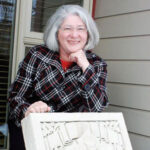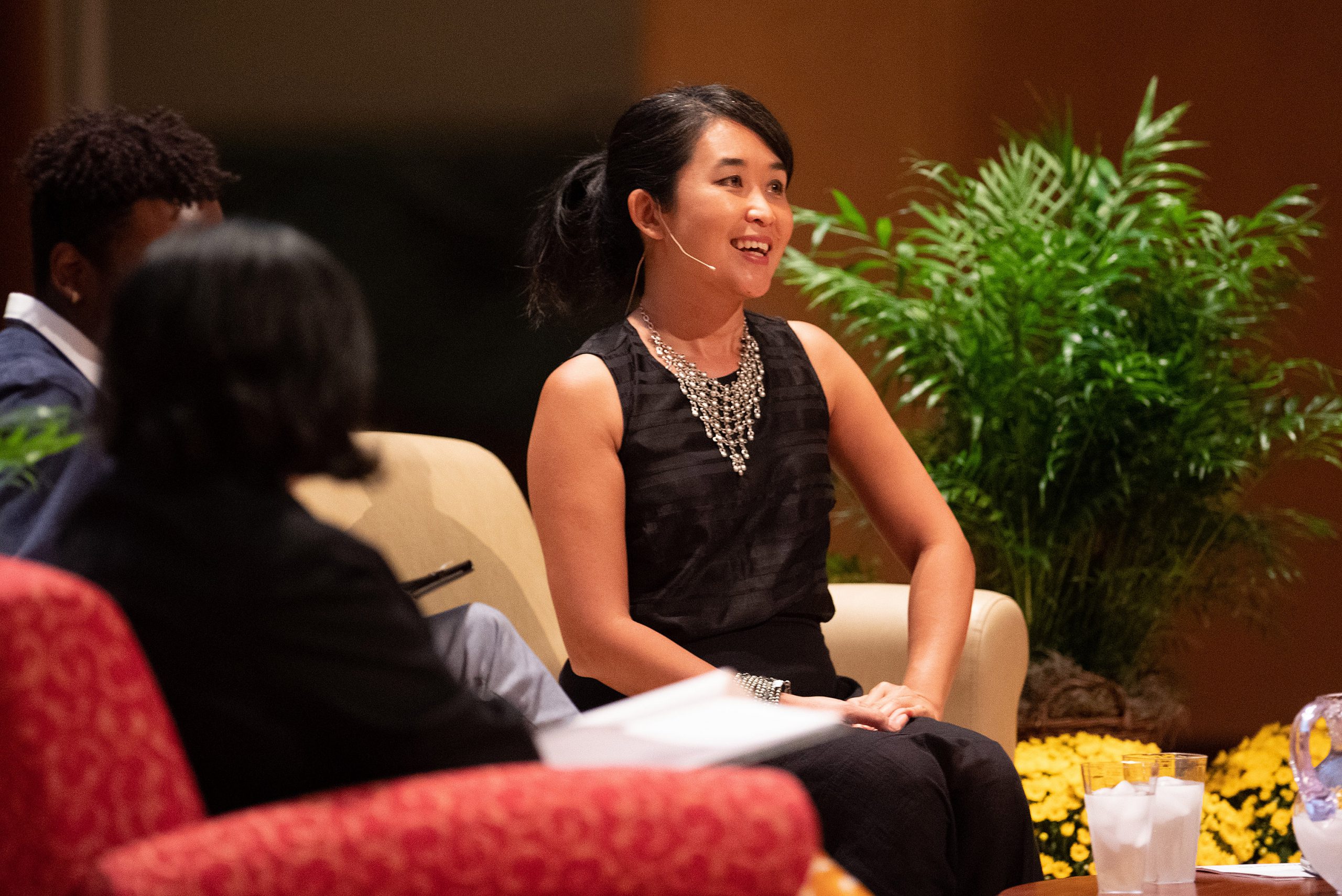
Thi Bui Provides Further Insight on “The Best We Could Do” to Wooster Community

WOOSTER, Ohio – Immigration, identity, and the importance of graphic storytelling were among the topics Thi Bui hit on as she presented the 2019 Peter Mortensen Lecture Tuesday night to an attentive audience of students, faculty, staff, and community members inside McGaw Chapel at The College of Wooster.
Bui discussed her award-winning illustrated memoir “The Best We Could Do,” the summer reading for new Wooster students as part of the first-year seminar program, by answering questions from moderators Alicia Brazeau, director of the writing center, Ivonne Garcia, chief diversity, equity, and inclusion officer, and sophomore Rondell MacKey.
“The Best We Could Do” is a personal story spanning Bui’s family’s refugee journey from war-torn Vietnam to the U.S., her ensuing childhood in California, and up through present-day motherhood to her Vietnamese-American son. With overarching themes of family dynamics, the sacrifices parents make for their children, and the significance of identity, the book is relatable to mass audiences.
Also relatable for many of those who are embarking on a liberal arts education at Wooster is Bui’s broad range of interests. With a passion for art, law, politics, writing, and more she gained a series of “rich life experiences and perspectives” en route to discovering her career path as a talented cartoonist, storyteller, and educator.
The illustrating and writing of “The Best We Could Do,” which fulfilled the seldom told account of Vietnamese refugees’ in the U.S., became a “rich, collaborative process” with her parents and their “lived history.” That process revealed “competing truths,” or the ways in which we “experience the same things differently,” a concept that can be applied in many forms, including across cultures.
The Asian-American identity was explored deeply in the book and Bui came away with one powerful conclusion. “The pressure to assimilate with a dominant culture really messes with people. I think, at this point, we don’t have a dominant culture in the U.S. We have a plurality … we don’t need to write, create, or speak from a minority standpoint. That’s not helpful … your identity is within you,” she remarked.
Bui offered strong thoughts on the current immigration crisis as well. “We live in a time where there are more displaced people in the world than existed when I was a refugee and even that existed at the end of World War II. There are over 70 million displaced people in the world. How can that be? What’s happening in the world that creates this? Displaced people are usually the most vulnerable people, the people with the least power. So, I think it’s important to shift the balance in the conversation because usually the people talking about immigration policy are not the ones who are actually impacted. It’s very easy to say ‘No, those people can’t come,’ but when you are those people … it’s sometimes the difference whether your kid lives or dies,” she said.
Besides the compelling story, another reason behind the success of “The Best We Could Do” is its beautiful, impactful illustrations. Bui noted it’s her job as a storyteller to write a focused narrative and “the graphic medium really, really forces the writer to do that because there’s only so many words that you can fit.”
A small group of students got an inside look at Bui’s creative process that underlies her illustrations via an artist’s talk at Ebert Art Center as her visit to campus continued on Wednesday.

Posted in News on September 25, 2019.


